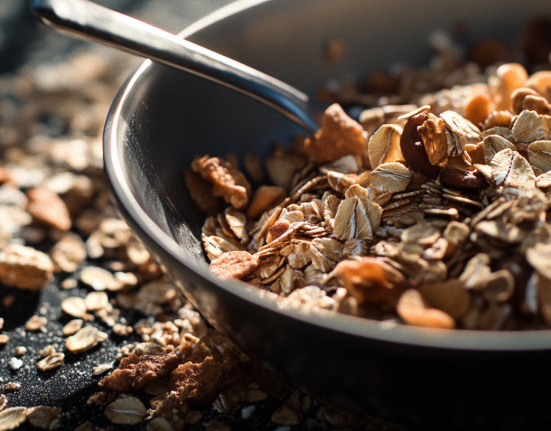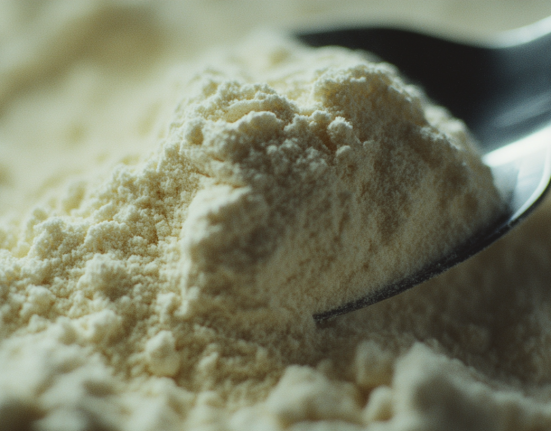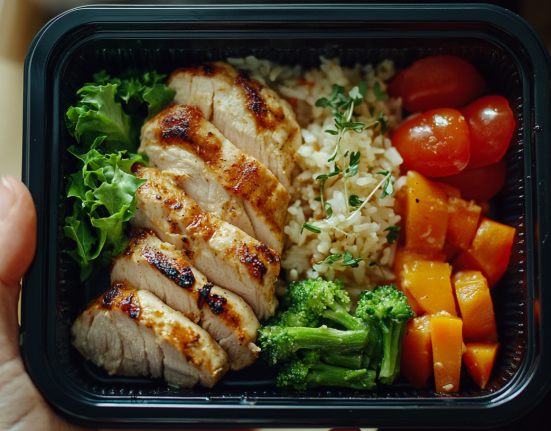Introduction
When managing heart health, especially if you’re dealing with heart conditions like hypertension or congestive heart failure, your diet plays a pivotal role. One key aspect of such a diet is maintaining low sodium levels. Excessive sodium in the diet can lead to increased blood pressure, which strains the heart and can worsen or potentially lead to heart conditions. Therefore, finding tasty, low-sodium recipes is not just about adhering to dietary restrictions—it’s about nurturing your heart and enhancing your health.
This blog post is dedicated to guiding those with heart conditions through a variety of easy, delicious recipes that keep sodium content low without sacrificing flavor. Whether you’ve been advised by a doctor to reduce sodium intake or are proactively managing your heart health, these recipes will provide you with nutritious, heart-friendly meal options. Our aim is to show you that a low-sodium diet can still be rich and enjoyable, filled with all the tastes and pleasures food can offer without the added risk to your heart. So, let’s dive into the world of low sodium cooking and discover how simple and tasty it can be to protect your heart.
Understanding Sodium and Heart Health
Sodium is a mineral that’s essential for proper body functions, such as fluid balance and the operation of nerves and muscles. However, too much sodium is a significant health risk, particularly for the heart. High sodium intake has been linked to increased blood pressure, a major risk factor for heart disease and stroke. For individuals with heart conditions, managing sodium intake isn’t just a dietary preference—it’s a critical component of their health management.
The American Heart Association recommends that adults consume no more than 2,300 milligrams of sodium per day, with an ideal limit of no more than 1,500 milligrams for most adults, especially those with high blood pressure or diagnosed heart conditions. Despite these guidelines, many people consume far more than this amount, largely due to processed and prepared foods.
For heart patients, reducing sodium intake can have profound benefits. It can help lower blood pressure, reduce the risk of heart attack and stroke, and lessen the burden on the heart muscle itself. It’s not just about avoiding table salt; it’s also about being aware of hidden sodium in processed foods, sauces, dressings, and even some natural foods.
In the following sections, we’ll explore how to incorporate low sodium ingredients into your meals, discover tasty and heart-healthy recipes, and learn how to use alternative seasonings to enhance flavor without adding extra sodium. Understanding the impact of sodium and learning how to manage its intake can empower heart patients to lead healthier lives while enjoying delicious, satisfying meals.
Essential Ingredients for Low Sodium Cooking
Adopting a low sodium diet doesn’t mean your meals will lack flavor; it simply requires a shift in the ingredients you choose. Here are some essential ingredients and tips that can help you maintain a rich and varied diet while keeping sodium levels in check:
1. Fresh Produce: Fresh fruits and vegetables are naturally low in sodium. Incorporate a variety of colorful produce like leafy greens, bell peppers, carrots, and berries into your diet. These not only add flavor and texture but also provide vital nutrients and antioxidants.
2. Herbs and Spices: Fresh and dried herbs like basil, oregano, parsley, thyme, and rosemary, as well as spices like cumin, paprika, and turmeric, can significantly enhance the taste of your meals without adding any sodium. Experiment with different combinations to see what works best for each dish.
3. Unsalted Nuts and Seeds: Nuts and seeds are great for adding a crunch to salads or as a snack on their own. Opt for unsalted versions to control your sodium intake. Almonds, walnuts, chia seeds, and flaxseeds are excellent choices.
4. Whole Grains: Swap out processed grains for whole grains like brown rice, quinoa, barley, and oats. These are naturally low in sodium and high in fiber, which is beneficial for heart health.
5. Low Sodium Broths and Stocks: Many recipes call for broth or stock, which can be high in sodium. Look for low sodium or no-salt-added varieties to use as bases for soups and stews.
6. Vinegars and Citrus: Instead of relying on salty dressings, use various vinegars (like balsamic, apple cider, or red wine vinegar) or citrus juices (lemon, lime, or orange) to add zest and brightness to your dishes.
7. Unprocessed Meats and Fish: Fresh or frozen meats and fish without added brines or seasonings are lower in sodium than their processed counterparts. Cooking these at home allows you to control the amount of sodium added.
8. Legumes: Beans, lentils, and peas are not only low in sodium but are also excellent sources of protein and fiber. They can be used in a variety of dishes from salads to soups.
By stocking your kitchen with these low sodium staples and getting creative with natural flavors and textures, you can enjoy a diverse and heart-healthy diet. Each of these ingredients offers the opportunity to explore new recipes and cuisines while keeping your heart health in mind.
Breakfast Recipes
Starting your day with a low-sodium breakfast is a fantastic way to ensure you’re eating heart-healthy from the moment you wake up. Here are some tasty, easy-to-make low sodium breakfast ideas that don’t compromise on flavor:
1. Overnight Oats: Combine rolled oats with unsweetened almond milk, a dash of cinnamon, and your choice of fruits such as berries or sliced bananas. Let it sit overnight in the refrigerator. In the morning, you have a creamy, flavorful breakfast waiting for you with no added sodium.
2. Egg and Veggie Scramble: Beat a few eggs and pour them into a non-stick skillet. Add a mix of diced vegetables like bell peppers, onions, and spinach. Cook until the eggs are firm and the veggies are tender. Season with herbs like chives or parsley for extra flavor.
3. Avocado Toast on Whole Grain Bread: Mash a ripe avocado with a fork, spread it on toasted whole grain bread, and top with sliced tomatoes and a sprinkle of black pepper or crushed red pepper flakes for a bit of spice.
4. Fruit and Yogurt Parfait: Layer plain Greek yogurt with mixed berries, sliced kiwi, and a handful of unsalted nuts for crunch. Drizzle with a little honey or maple syrup if you prefer it sweeter.
5. Smoothie Bowls: Blend a mix of frozen fruits like strawberries, blueberries, and a banana with a bit of unsweetened almond or oat milk to create a thick smoothie. Pour it into a bowl and top with unsalted nuts, seeds, and fresh fruit slices.
6. Cottage Cheese with Pineapple: For those who enjoy a bit of tang in their breakfast, mix low-fat cottage cheese with chopped fresh pineapple. It’s refreshing, filling, and low in sodium.
7. Almond Butter & Banana Pancakes: Make pancakes using almond flour and unsweetened almond milk. Add a mashed banana and a touch of vanilla extract to the batter for natural sweetness. Serve with a dollop of almond butter on top.
These breakfast recipes provide nutritious, flavorful options that keep sodium intake low. They’re designed to be versatile, allowing you to mix and match ingredients based on your preferences and what you have available in your kitchen. Enjoy experimenting with these dishes to keep your morning meals exciting and heart-healthy.
Lunch Recipes
Lunch is a perfect opportunity to incorporate a variety of low sodium ingredients into delicious, heart-healthy meals. These recipes are simple, quick to prepare, and packed with flavor, making them ideal for midday nourishment without the excess sodium.
1. Quinoa Salad with Mixed Vegetables: Cook quinoa according to package instructions and allow it to cool. Toss with chopped cucumbers, tomatoes, red bell peppers, and fresh parsley. Dress the salad with olive oil and lemon juice for a refreshing, nutritious lunch.
2. Turkey and Avocado Wrap: Use a whole wheat or low sodium tortilla and fill it with slices of low sodium turkey breast, slices of ripe avocado, lettuce, and sliced red onion. Roll it up for a satisfying, easy-to-eat meal.
3. Vegetable Soup: In a large pot, sauté onions, garlic, carrots, and celery in a bit of olive oil. Add low sodium vegetable broth, chopped tomatoes, green beans, and herbs like thyme and bay leaves. Simmer until the vegetables are tender. This soup is comforting and can be stored for several days.
4. Grilled Chicken Breast with Steamed Vegetables: Season a chicken breast with a mix of herbs like rosemary and black pepper, then grill until cooked through. Serve with a side of steamed broccoli, carrots, and bell peppers, seasoned lightly with lemon zest and a dash of olive oil.
5. Mediterranean Chickpea Salad: Combine cooked chickpeas with diced cucumber, cherry tomatoes, red onion, and parsley. Toss with a dressing of olive oil, lemon juice, and crushed garlic for a protein-rich, flavorful salad.
6. Baked Sweet Potato with Cottage Cheese: Bake a sweet potato until tender. Split it open and fill with low-fat cottage cheese, a sprinkle of chives, and a pinch of paprika. This combination offers a creamy texture with a sweet and savory flavor profile.
7. Spinach and Mushroom Stir-Fry: Quickly stir-fry fresh spinach and sliced mushrooms in a skillet with a small amount of sesame oil. Add a touch of ginger and garlic for a burst of flavor without the need for salt.
These lunch recipes not only keep your sodium intake in check but also ensure you’re eating meals rich in nutrients and flavors. Whether you’re at home or packing a lunch to go, these ideas can help you maintain a heart-healthy diet throughout your busy day.
Dinner Recipes
Dinner is the perfect time to unwind and enjoy a hearty, flavorful meal that supports your heart health. Here are some delicious, low sodium dinner recipes that are simple to prepare and sure to satisfy your taste buds.
1. Grilled Salmon with Herb Marinade: Marinate salmon fillets in a blend of olive oil, lemon juice, minced garlic, and fresh dill. Grill the salmon until it’s flaky and tender. Serve with a side of roasted asparagus and a wedge of lemon for an extra zest.
2. Vegetable Stir-Fry with Tofu: In a large skillet or wok, stir-fry a variety of colorful vegetables such as bell peppers, broccoli, and snap peas in a small amount of sesame oil. Add firm tofu cubes and toss everything with a low sodium soy sauce or tamari. Serve over a bed of cooked brown rice or quinoa for a filling plant-based meal.
3. Chicken Cacciatore: Brown pieces of boneless, skinless chicken breast in a skillet. Add sliced bell peppers, onions, and mushrooms, cooking until softened. Pour in a can of no-salt-added diced tomatoes and season with Italian herbs like oregano and basil. Simmer until the chicken is cooked through and the flavors are melded. Serve this hearty dish over whole-wheat pasta or steamed greens.
4. Beef and Vegetable Kebabs: Cube lean cuts of beef and thread them onto skewers with chunks of onions, bell peppers, zucchini, and cherry tomatoes. Brush with a mixture of olive oil, garlic, and a sprinkle of smoked paprika. Grill until the beef is cooked to your liking and the vegetables are tender. Serve with a side of cucumber yogurt sauce made with low-fat Greek yogurt.
5. Baked Cod with Lemon and Capers: Place cod fillets in a baking dish and season with black pepper and a little olive oil. Sprinkle with capers and thin lemon slices. Bake in a preheated oven until the fish is flaky and cooked through. Pair with a side of steamed green beans and a slice of whole-grain bread.
6. Lentil Soup with Spinach: Cook green lentils in a pot with low sodium vegetable broth, diced carrots, celery, and onions. When the lentils are nearly done, add a handful of fresh spinach and cook until wilted. Season with ground cumin and black pepper for a warm, comforting soup.
7. Pork Tenderloin with Roasted Apples and Onions: Roast a pork tenderloin in the oven alongside slices of apples and red onions. Season with thyme, rosemary, and black pepper. The natural sweetness of the apples complements the pork beautifully, creating a dish that’s both flavorful and easy to make.
These dinner recipes provide nutritious, delicious options for maintaining a low sodium diet. They demonstrate that you can enjoy a variety of meats, fishes, and plant-based dishes while keeping your heart health in check.
Snack Ideas
Snacking is an important part of maintaining energy levels throughout the day, especially when you’re following a specific dietary regimen like a low sodium diet. Here are some healthy, low sodium snack ideas that are both nutritious and satisfying:
1. Fresh Fruit: Simple and naturally low in sodium, fresh fruits like apples, pears, oranges, and berries make excellent snacks. They provide essential vitamins and a quick energy boost.
2. Veggie Sticks with Hummus: Slice carrots, celery, bell peppers, and cucumbers into sticks and dip them in homemade or store-bought low sodium hummus. This snack is not only low in sodium but also high in fiber and protein.
3. Greek Yogurt with Honey and Nuts: Opt for plain Greek yogurt to avoid the added sodium found in flavored varieties. Sweeten it with a drizzle of honey and add a sprinkle of unsalted nuts for a creamy texture and extra crunch.
4. Unsalted Nuts and Seeds: A handful of mixed unsalted nuts or seeds can be a great way to satisfy midday hunger. Almonds, walnuts, pumpkin seeds, and sunflower seeds are all healthy options.
5. Rice Cakes with Avocado: Spread mashed avocado on unsalted rice cakes and top with sliced tomatoes and a sprinkle of black pepper or chili flakes for a bit of spice. This snack is filling and provides heart-healthy fats.
6. Air-Popped Popcorn: Air-popped popcorn is a great low sodium snack option. Avoid butter and salt; instead, try seasoning it with a sprinkle of nutritional yeast or a dash of your favorite salt-free spice blend for flavor.
7. Homemade Smoothie: Blend your favorite fruits like bananas, berries, and peaches with unsweetened almond milk or water. Add a spoonful of nut butter for a richer, more satisfying snack.
8. Cottage Cheese with Pineapple: Mix low-fat cottage cheese with chunks of fresh pineapple for a snack that’s rich in protein and sweetness, making it both refreshing and filling.
These snacks are easy to prepare and are great for keeping hunger at bay between meals without increasing your sodium intake. Whether you’re at home, at work, or on the go, these low sodium snacks are perfect for maintaining a healthy diet throughout your busy day.
Seasoning Without Salt
Reducing sodium in your diet doesn’t mean sacrificing flavor. There are numerous ways to enhance the taste of your meals without reaching for the salt shaker. Here’s how to season your dishes richly while keeping them low in sodium:
1. Fresh Herbs: Fresh herbs like basil, cilantro, parsley, dill, and mint can add a burst of freshness and flavor to any dish. Use them in salads, marinades, soups, and sauces for a vibrant taste.
2. Dried Herbs and Spices: Dried herbs such as thyme, rosemary, oregano, and spices like cumin, turmeric, paprika, and cinnamon are intensely flavorful and can dramatically transform the profile of your meals. Experiment with different combinations to find your favorites.
3. Citrus Zest and Juice: The zest and juice of lemons, limes, and oranges add a tangy kick to dishes. Use them in dressings, marinades, or squeezed over cooked dishes to brighten flavors without adding sodium.
4. Vinegars: A splash of vinegar can bring just the right amount of acidity to balance the flavors in your meals. Try balsamic, red wine, apple cider, or rice vinegar in salads, soups, and stews.
5. Garlic and Onion: Both garlic and onion add depth and richness to dishes. Use them fresh or as powders, but be cautious with garlic salt or onion salt, which are high in sodium.
6. Mustard: Available in many varieties, mustard can add a sharp, tangy element to dressings and marinades. Opt for varieties without added salts.
7. Smoke and Heat: Ingredients like smoked paprika, chipotle powder, or black pepper can add a smoky or spicy touch, giving dishes a robust flavor without the need for salt.
8. Nutritional Yeast: This cheesy-flavored condiment is great on popcorn, in mashed potatoes, or sprinkled over pasta. It’s naturally low in sodium and high in B vitamins.
9. Seeds: Toasting seeds like sesame, pumpkin, or sunflower can enhance their nutty flavor, making them great for adding texture and taste to salads and side dishes.
By learning to use these salt alternatives, you can create dishes that are rich in flavor and healthy for your heart. Experimenting with different herbs, spices, and acidic components can open up a new world of culinary possibilities, helping you enjoy a low-sodium diet that is anything but bland.
Reading Food Labels
Navigating the grocery store while managing a low sodium diet can be challenging, especially when many processed foods contain hidden sodium. Learning how to read and interpret food labels is essential for making informed choices that align with your heart-healthy dietary needs. Here are key tips on what to look for:
1. Check the Serving Size: Start by looking at the serving size and the number of servings per container. This will help you understand how much you are actually consuming and how that fits into your daily sodium allowance.
2. Look at the Sodium Content: The sodium content is listed in milligrams (mg). Compare this number to your daily sodium limit. Remember, the American Heart Association recommends no more than 2,300 mg per day, with an ideal limit of about 1,500 mg for most adults.
3. Understand Label Terms: Labels use specific terms which have legal meanings:
- Sodium-Free: Less than 5 mg of sodium per serving.
- Very Low Sodium: 35 mg or less per serving.
- Low Sodium: 140 mg or less per serving.
- Reduced Sodium: Usually means the product has 25% less sodium than the original product.
- Light in Sodium or Lightly Salted: 50% less sodium than the normal version.
4. Identify Other Names for Sodium: Sodium can appear under different names, such as monosodium glutamate (MSG), sodium nitrate, sodium citrate, sodium chloride, and baking soda (sodium bicarbonate). Familiarize yourself with these terms to better spot sources of sodium.
5. Watch for Hidden Sodium Sources: Even foods that don’t taste salty can have high sodium content, like certain cereals, pastries, and condiments. Be diligent about checking labels on all packaged foods.
6. Compare Brands: Sodium levels can vary widely between different brands of the same type of food. Compare labels to find the brands that offer the lowest sodium options.
7. Use Nutrition Apps: Consider using a smartphone app designed to read and interpret nutritional labels. These can help track your sodium intake more accurately and make shopping easier.
By becoming proficient at reading food labels, you can take control of your sodium intake and make choices that better support your heart health. This skill is crucial for maintaining a low-sodium diet and ensuring that you’re not inadvertently consuming more sodium than you intend.
Meal Planning Tips
Effective meal planning is key to maintaining a low sodium diet without feeling restricted or overwhelmed. Here are several strategies to help you plan your meals efficiently and enjoy a variety of nutritious, low sodium dishes throughout the week:
1. Start with a Plan: Before the week begins, take some time to plan out your meals. Consider your schedule and how much time you’ll have for cooking each day. This will help you avoid last-minute decisions that might lead to higher sodium choices.
2. Build a Low Sodium Pantry: Stock your kitchen with low sodium staples such as unsalted nuts, whole grains, no-salt-added canned beans, and plenty of fresh or frozen fruits and vegetables. Having these items on hand makes it easier to whip up a quick, healthy meal.
3. Cook in Batches: Prepare larger portions of low sodium meals when you have time, and store the leftovers in the fridge or freezer. This way, you’ll have ready-to-eat healthy meals on busy days, reducing the temptation to grab higher sodium options.
4. Use a Slow Cooker or Pressure Cooker: These kitchen tools are great for making flavorful, low sodium dishes with minimal effort. You can throw in a variety of ingredients, such as lean meats, legumes, and vegetables, and let the cooker do the work for you.
5. Embrace Themed Nights: To keep meal planning fun and varied, consider themed nights like “Meatless Monday” or “Fish Friday.” This can help narrow down your meal options and ensure you’re including a variety of foods in your diet.
6. Plan for Snacks: Don’t forget to include snacks in your meal planning. Prepare heart-healthy, low sodium snacks such as sliced veggies, fresh fruits, or a small portion of unsalted nuts to keep hunger at bay between meals.
7. Keep a Recipe Rotation: Develop a list of go-to recipes that you know are low in sodium and that you enjoy eating. Rotating these recipes can keep your meals interesting without the constant need to search for new ideas.
8. Be Flexible: While it’s good to have a plan, be flexible enough to adapt if necessary. If you planned a meal that doesn’t work out, have a backup option that’s still low in sodium.
9. Monitor Portion Sizes: Even low sodium meals can become high in sodium if eaten in large quantities. Pay attention to portion sizes to keep your sodium intake within recommended limits.
By implementing these meal planning tips, you can ensure that maintaining a low sodium diet becomes a manageable and enjoyable part of your routine. Planning ahead not only helps you stay on track with your dietary goals but also reduces stress and improves your overall eating habits.
Challenges and How to Overcome Them
Adopting a low sodium diet can come with its own set of challenges, from feeling restricted in your food choices to missing the flavor that salt adds. Here’s how to address and overcome some common hurdles:
1. Flavor Loss: Many people find low sodium foods to be less flavorful. To combat this, enhance your dishes with a variety of herbs, spices, citrus, and vinegar to boost flavor without adding sodium. Experimenting with different flavor combinations can make meals exciting and delicious.
2. Convenience Foods: Processed and pre-packaged foods are typically high in sodium and may seem like the only quick meal options. Prepare for busy days by having homemade low sodium snacks and meals ready in your fridge or freezer. Investing in a slow cooker or pressure cooker can also help you make low sodium meals more conveniently.
3. Dining Out: Eating out can be a challenge since many restaurant meals are high in sodium. When dining out, don’t hesitate to ask how dishes are prepared and request that no salt be added to your meal. Opt for steamed, grilled, or baked dishes instead of fried or sautéed options, and ask for sauces and dressings on the side.
4. Family and Social Gatherings: It can be difficult to adhere to a low sodium diet during family events or social gatherings. Offer to bring a dish that you know is low in sodium, so you have a healthy option available. Also, communicate with your host about your dietary restrictions—they may be accommodating.
5. Reading Labels: It can be time-consuming and confusing to read nutritional labels for sodium content. Practice makes perfect. The more you do it, the quicker and easier it becomes. Use apps that scan and summarize nutritional content to save time.
6. Cravings: If you find yourself missing salty snacks, look for alternatives that satisfy the crunch and flavor without the salt, such as unsalted popcorn seasoned with a sprinkle of nutritional yeast or homemade kale chips with paprika.
7. Cost: Fresh and natural low sodium foods can sometimes be more expensive than their processed counterparts. To manage costs, buy fruits and vegetables that are in season, and consider visiting local farmers’ markets or subscribing to a community-supported agriculture (CSA) box. Buying in bulk and choosing generic brands for staples can also help save money.
By acknowledging these challenges and planning how to tackle them, you can successfully maintain a low sodium diet and enjoy a healthier lifestyle without feeling deprived.
Conclusion
Embarking on a low sodium diet is a commendable step towards improving heart health and overall well-being. While it may present challenges, the benefits of reducing sodium intake—such as lowering blood pressure and decreasing the risk of heart disease—are significant and well worth the effort.
Remember, adopting a low sodium lifestyle doesn’t mean you have to sacrifice flavor or enjoyment in your meals. By using creative seasoning techniques, embracing a variety of fresh ingredients, and being proactive about meal planning and label reading, you can enjoy delicious and diverse foods that nourish your body and support your heart health.
Whether you’re cooking at home, eating out, or navigating social gatherings, the strategies discussed in this blog post can help you maintain a low sodium diet without feeling restricted. It’s about making informed choices, adapting recipes, and finding joy in the new flavors you discover.
We encourage you to start small, perhaps by trying one or two of the recipes or tips shared in this post, and gradually incorporate more low sodium practices into your daily life. Over time, you’ll likely find that these healthier habits become second nature.
Thank you for joining us on this journey to a healthier heart. Your body (and your taste buds!) will thank you for it. Here’s to a happy, heart-healthy future, rich in taste and low in sodium.







Leave feedback about this